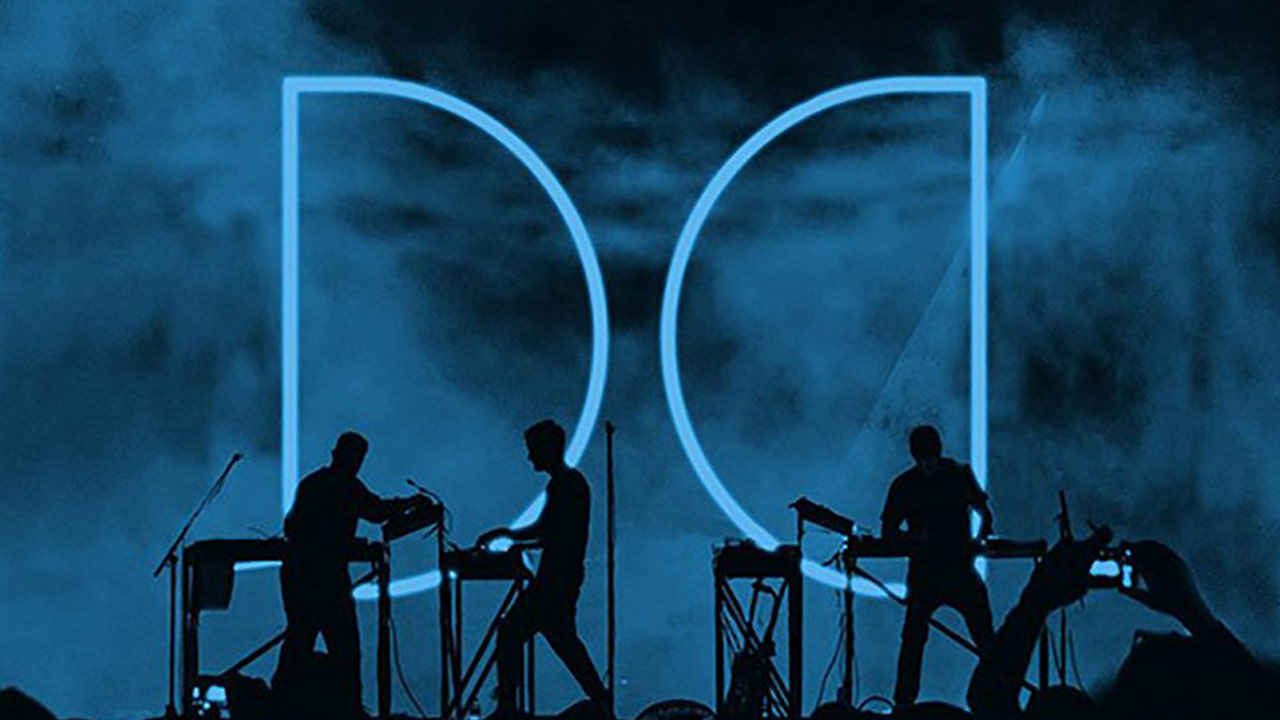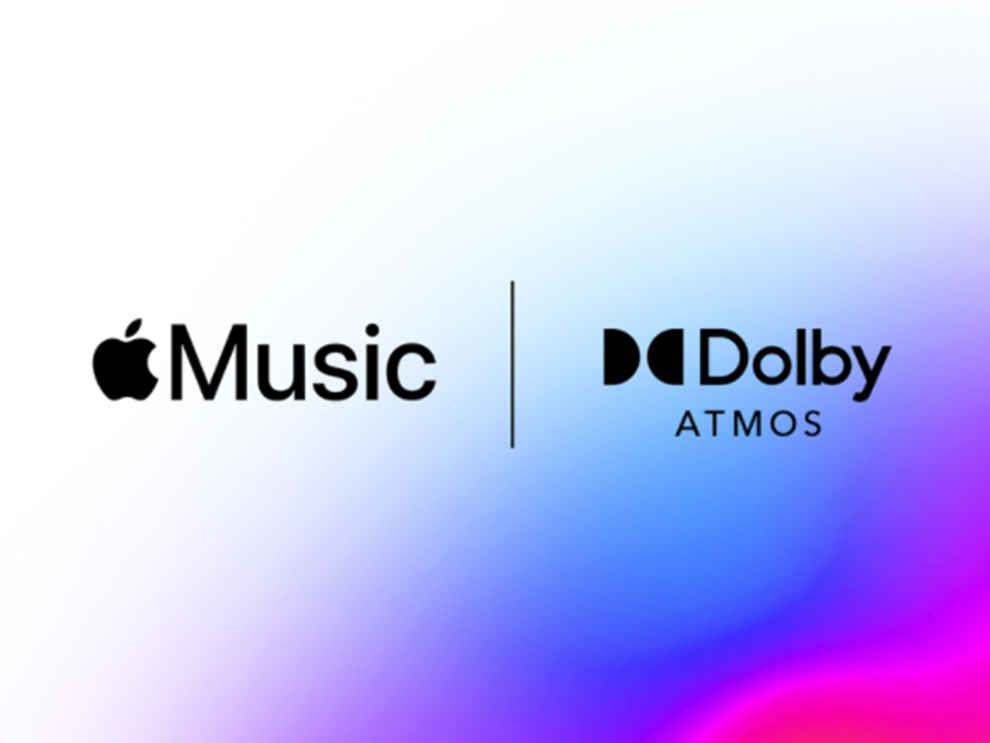Dolby Atmos for Music: Everything you need to know about the new 3D audio format

First showcased at CES 2020, Dolby Atmos for Music is a new 3D audio format that enhances the immersiveness of the music and makes users feel like the sound is coming not just from two directions, but from all around them. Traditionally, music is played in a stereo format where sounds come from either the left or right channel. Dolby Atmos Music goes much further and can support up to 128 theoretical channels and 34 individual speakers. The experience is similar to the one we get from Dolby Atmos systems in cinemas but on your headphones or the onboard speakers of your smartphones. To learn more about the technology, we spoke to Mr Pankaj Kedia, Managing Director, Emerging Markets, Dolby Laboratories. In the interview, we learn more about the new technology, its technical aspects, what users need to experience it, and much more.
 Survey
SurveyDolby Atmos for Music: Everything you need to know
Digit – First off, can you delve into what exactly Dolby Atmos for Music is? How does it make a difference in the user’s listening experience?
Mr Pankaj Kedia – Dolby Atmos for Music is a new way of creating music and a new way of experiencing music. Firstly, it reveals new details in the music that we have not heard. It might be certain instruments, certain riffs, certain percussion beats, or even just the singer breathing into the mic. So, there are details that we’ve not heard in songs, they will be revealed. The second thing is that there is an incredible amount of clarity, detail and separation between the different elements of music. From an experience perspective, it’s a much richer experience, and a much stronger emotional connect. It tends to bring the audience or the fan closer to the artist. The sense a user gets is as if you’re sitting in the studio that the song was being recorded. In a certain way, it brings fans and artists closer. So, it’s a fantastic new way of both creating music and experiencing music. Whether they are going to be experiencing it on their mobile devices, PCs, living room, and in the future, even in cars.
Mr Pankaj Kedia, Managing Director, Emerging Markets, Dolby Laboratories
Digit – Can you also delve into some of the technical aspects of how Dolby Atmos for Music actually works?
Mr Pankaj Kedia – So, we’ll talk about the creation bit and the experience bit. From a creation perspective, what we do with Dolby Atmos Music is that we provide new tools and new techniques to the people who create the music including the artist, the producer, the mixing engineer. With these new tools and techniques, it takes away a lot of limitations that are present in creating music currently. Essentially music, the way it exists today, is in stereo, which is two channels of sound. There are a lot of significant limitations and constraints pertaining to what you can do with it. For example, you want the vocals to be heard, so you can’t really make instruments stand out because the vocals would get drowned. So, there’s a lot of constraints. In Dolby Atmos for Music, they’re creating music in a completely three-dimensional sphere. It’s actually a room that they create music in. They can then place instruments and sounds as individual objects around the listener and they can move them around very precisely as well. So not only is the placement precise, but the movement is also precise. This does mean that for people who are creating the music if they’re doing it in a studio, there are some additional speakers required, but if they’re doing it on headphones, they can even mix it on headphones. So, there are various ways of creating the music.
Now, coming to the experience part, from a consumer perspective, one of the most common use cases of listening to music is with a mobile device using headphones. And then you have PCs and living rooms to follow that. From a mobile perspective, Dolby Atmos Music works with any smartphone that is Atmos capable and with any pair of headphones. So, it’s not headphone dependant. Whether you’re using Bluetooth headphones or wired headphones, it will work with any pair of headphones, as long as your mobile device is Atmos-enabled. Today, we have almost every leading manufacturer which includes Atmos capabilities on their smartphones. If you look at Apple, they have it on all their smartphones. In the case of Samsung, it’s widely deployed across its portfolio. You also have Xiaomi, Oppo, Huawei, OnePlus that include Dolby Atmos capabilities. Globally, there are more than a million phones being shipped every day with Dolby Atmos capabilities. Also, in India, we see a large number of devices available. The interesting thing with mobile phones is that we tend to upgrade them very frequently. So, if you don’t have it (Dolby Atmos) today, then your next phone should have it. So, make sure you look for Dolby Atmos capabilities on your next phone. So, if a song is created in Atmos and it is available on a streaming service with Atmos, you can then play it back on an Atmos mobile by either using the onboard speakers or your favourite pair of headphones. What you will experience is not just sound coming from two point sources, but from all around you. It will immerse you in the music like a song bath happening all around you. From a technical perspective, it widens what we call the soundstage, so it’s a much bigger soundstage you’re hearing. You know the direction the sound is coming from as if you were sitting in the middle and the band is playing around you. The most frequent feedback we hear is that it is the new way to listen to music and you can never go back to stereo. We hope that Atmos will be the new way of creating and experiencing music, for everything in the future.
Digit – Dolby Atmos Music was showcased at CES 2020, since then what are some of the improvements that have been made to the technology?
Mr Pankaj Kedia – Dolby is a company that has innovation at its core, so we’re constantly inventing and improving things over time. We showcased Atmos Music in 2020 and we had a couple of services delivering it in the US such as Tidal and Amazon Music. Now, with the launch of Apple Music, it’s become more mainstream. It’s available across the globe and has become more accessible. The improvements that have happened are on multiple fronts. On the creation side, there have been significant improvements in the tools. In Dolby, whenever we create any technology we always put the content creator in the middle of it. We create the technology around the content creator. So, as we’ve engaged with new artists and content creators, and as we’ve got feedback from them, we’ve constantly improved the technology in terms of creation. Also, what has happened due to the pandemic-induced lockdown is that a lot of studios were not accessible. So, people were mixing music at home, so there were a lot of mixes created on headphones since the homes are not set up with a large number of speakers. So, that meant there were improvements on the headphone mixing side as to how you can get a better understanding of how to mix the songs with headphones.
On the playback side, the technology and software that goes into the devices have also been constantly improved and refined. There’s something called a virtualiser and renderer that takes an Atmos song and then renders this experience around the head. There have been a lot of improvements on this side as well to make sure there’s a more accurate translation from creation to playback. So, what you’re hearing is exactly the way the creator has created it.
Digit – What are some of the tools and devices that a user will need to experience Dolby Atmos Music?
Mr Pankaj Kedia – There are predominantly four listening use cases we’d think about from a music perspective. One is the mobile experience which could be from headphones or onboard speakers. Interestingly, we’ve seen a lot of data that indicates that listening from onboard speakers is much more common than one would imagine. Some services reported that up to 50 per cent of the listening is through onboard speakers. So, it’s an important use case. In the case of mobile, you need an Atmos-compatible mobile phone which is very easy to find. Most manufacturers have a wide range of devices available with Atmos. They don’t have to be expensive devices, we see enough devices on the market (with Atmos) from Rs 10,000 onwards. So, it’s very accessible. Next, you can use any set of headphones with that, so it’s not headphone dependant. But each headphone performs differently since they have their own frequency response and tonal profile. However, for an immersive experience, any headphones will give you that. If it’s an Atmos compatible phone, it will play Atmos Music from the speaker. You can hold the phone in front of you and it will give you the sense that sound is coming from behind you and all around you. Onboard speakers are pretty small, so what we can achieve with these speakers is pretty incredible.
Secondly, for the PC experience, you need one which is Dolby Atmos compatible. You can again listen to it on onboard speakers or through headphones. For example, Lenovo has a lot of models with Dolby Atmos capability, and there are others as well. Thirdly, is the living room experience. In the living room, you can be watching it from a connected set top box or smart TV. All the streaming apps now have living room apps as well. For example, if you had Apple Music on your Apple TV and you had an Atmos soundbar connected to it, you can then get the full experience in your living room. The fourth is something we’re working on, it’s a new area for us, it is on the automobile side. A lot of music listening happens in automobiles. That’s a very interesting area we’re working on to bring the Atmos experience to automobiles. From the demos we’ve done, people cannot believe how good and different it sounds.
From the mainstream perspective, it’s a mobile phone use case. There, what you essentially need is a phone with Atmos capabilities and a streaming service, such as Apple Music, that is streaming Atmos content.
Digit – Are there any other streaming services on mobile currently that can stream Dolby Atmos content?
Mr Pankaj Kedia – Globally, there are quite a few services and it’s a growing list. So, you will see a lot of streaming services come up in the future that can stream Atmos content.
Digit – Speaking of Apple, the company recently announced spatial audio on Apple Music with Dolby Atmos for Music. Can you tell us more about this partnership and what users can expect?
Mr Pankaj Kedia – The Apple partnership is a very special partnership for us, we’ve worked very closely with Apple for a long time. Apple has used our technology, both on the audio side with Atmos and also on the video side with Dolby Vision for a long time across all of their devices. As far as this announcement is concerned, Apple Music is one of the leading global music streaming services. They have made a big move in terms of redefining the music listening experience for their consumers. The music experience, for a long time, has remained unchanged in a certain way. We had the era of CDs, with MP3 it actually went down, it became worse because you were getting low-quality music where most of what was recorded were lost. With all of this, issues of piracy also came around. It’s now coming back where streaming services are offering high-quality content. Apple now takes it to another level where they are offering an immersive experience through spatial audio which is powered by Dolby Atmos Music. So, all of the spatial audio experience as far as Apple Music is concerned is the Dolby Atmos experience. Those artists and labels that have created music in Dolby Atmos will playback as a spatial music experience on Apple.
Digit – What are the things people will experience from Dolby Atmos Music in India? Are there going to be more platforms and services? What can the Indian audience expect?
Mr Pankaj Kedia – From an India perspective, we have Apple Music now, we have other services, and in the future, we may have even more services. What is most important for our team from an Indian perspective is getting Atmos to be used by all the artists across languages. Whether it’s vernacular languages, or Hindi, any language, we want to make sure that artists have access to be able to create music in Atmos and then have platforms where they can publish their music with Atmos capabilities. The focus for us at this stage is around expanding the content availability. We’ve already launched a large number of Atmos titles with leading artists such A. R. Rahman, Amit Trivedi, Divine, and Badshah. New tracks are being created every day and every week. So, the focus is to expand that and expand it across every language in India. Music is global but very local also, so we want to make sure whatever music you listen to, you should have to option to listen to it in Atmos.
Digit – If you’re an artist and you want to create music in Dolby Atmos, what are the steps?
Mr Pankaj Kedia – Essentially, it is a process at the time of mixing the song. Creating a song has many steps involved, from conceptualising, programming, and many different steps. From an Atmos perspective, when you’re mixing the song and putting all the elements together, that’s when Atmos comes into play. You have to make sure it is created in Atmos, it is mixed with Atmos tools and techniques. What does happen, we saw this in the case of cinema and OTT also, where creating something in Dolby Atmos is a process in post-production. What does happen is that over time artists start understanding this tool much more deeply. They start becoming more familiar and it starts opening up more possibilities for them. So, in the next song they create they would realise that they can do something new which they’ve never been able to do. It will add to the whole creative experimentation. We create these amazing tools for content creators and then we are surprised by how they are being used. Artists take the tool and really create amazing things with it. We’ve seen it in the case of movies, television and now in the case of music. We’re looking forward to what users are going to create with this.
Digit – Let’s end with any future plans from Dolby Atmos and what users can expect?
Mr Pankaj Kedia – In music, we’re just starting off. If you look at the genres of music that exist beyond entertainment, there’s well-being, education and other areas. We are just at the very start and we’ve only talked about a few listening cases, the listening cases can increase over time. We’re doing a lot of interesting work on the audio-video side with television and OTT. We’ve had the Atmos experience in cinema and the living room, but now we’re seeing a lot of work happening in bringing the Atmos experience to AV content on mobile devices too. Our DNA is around innovation so we’re sitting still, we’re constantly innovating, so users will see a lot of interesting things coming out from us in the future.
Dhriti Datta
Perpetually sporting a death stare, this one can be seen tinkering around with her smartphone which she holds more dear than life itself and stuffing her face with copious amounts of bacon. View Full Profile


